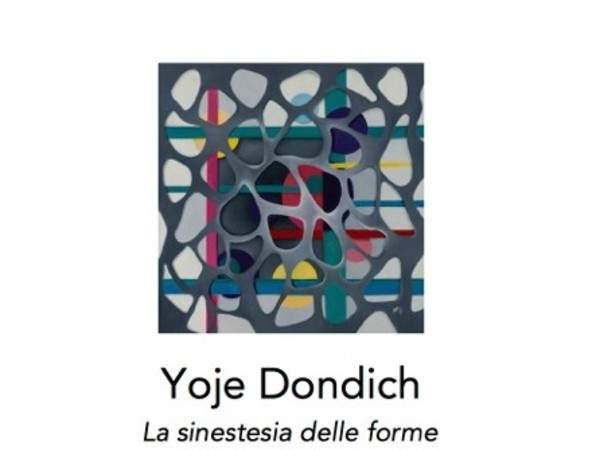Milan, Yoje Dondich from Mexico to Italy for the exhibition The Synaesthesia of Forms
After the encouraging success of the Madrid exhibition, artist Yoje Dondich (Mexico City, 1952), an original figure in the Mexican art scene who, since the early 1980s, has been exploring the language of painting, developing new paths and interesting formal solutions, arrives in Italy . The occasion to get to know her is the exhibition The Synaesthesia of Forms, which, from next March 8, is set up in the historic venue of Palazzo Giureconsulti in Milan.
Organized by Must Wanted Group, the creator of the exhibition project that is part of a wide-ranging activity to promote and support Mexican art abroad, the exhibition, realized also thanks to the collaboration of the Consulado de Mèxico en Milan, collects a selection of 14 works that document Yoje Dondich’s path and constitute a synthesis of his long research in the field of abstraction.
Yoje Dondich (studied Psychology, Drawing, Logotherapy and Interior Design) realized his plastic training with several Mexican and foreign masters such as Rolando Belfai, Isaac Stavans and Manuel Guillén. His complex pictorial vocabulary cannot be oriented in a single direction since his alphabet is fgurative and abstract, surrealist and dreamlike. The multiplicity of his works is mostly due to his constant quest in expressing the doubts that arise in the inner and creative world. Observation is a constant and essential action of his work just as one of the main intentions of his art is to expand the viewer’s perception toward a sensory experience that allows him to discover other sensations. Therefore, the choice of the title, The Synaesthesia of Form, in allusion to the sensory/perceptual phenomenon indicating a “contamination” of the senses, is not accidental.
While his beginnings are characterized by the use of drawing in works with a strong surrealist tendency, which he later also materialized in oil paintings, in the 1990s his style underwent a radical turn toward the field of abstraction. It is a set of works that correspond to a moment of formal research with painting, where color, line, shapes and strokes are the main protagonists. The exhibition at Palazzo dei Giureconsulti kicks off with Ritorno, an oil on canvas from 1995 in which for the first time Dondich, who has defned this work “a dreamlike journey toward abstraction,” uses its canons by making a composition characterized by a strong domination of line and a measured frequency in the integration of color, to which he also adds organic forms.
The path continues with the presentation of the evolution of these explorations, with works that include surrealist and geometric elements. This is a set of works that highlight the attraction for the line and the infnite possibilities it encounters in painting, the interest in organic and arabesque forms that inhabit the composition independently and, infne, the search for volumetry starting from the relationship of certain geometric forms, an aspect of the latter that is very evident in the most recent research.
Even color, an inescapable element of Dondich’s art, undergoes an evolution: starting from a position of subservience from the forms of the first abstract works, in which he preferably uses diaphanous colors - browns and grays - and makes them expand in two or three shades per hue, he arrives at works such asTesoro nascosto of 2015 where it is the colors that pave the way for geometry, which is organized according to their correspondence as well as the artist’s intuition.
The exhibition will remain open until April 5, and the next stops will be Venice in May and, next fall, Rome.
 |
| Milan, Yoje Dondich from Mexico to Italy for the exhibition The Synaesthesia of Forms |
Warning: the translation into English of the original Italian article was created using automatic tools. We undertake to review all articles, but we do not guarantee the total absence of inaccuracies in the translation due to the program. You can find the original by clicking on the ITA button. If you find any mistake,please contact us.




























